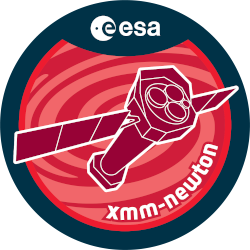

| Proposal ID | 055565 |
| Title | Accretion-driven X-rays from low-mass classical T Tauri stars |
| Download Data Associated to the proposal | https://nxsa.esac.esa.int/nxsa-sl/servlet/data-action-aio?obsno=0555650201 |
| DOI | https://doi.org/10.5270/esa-0zel6fr |
| Principal Investigator, PI | Dr Antonio Maggio |
| Abstract | We propose to obtain a good quality high-resolution X-ray spectrum for theM-type classical T~Tauri star (CTTS) VV~Sco. Our goal is to investigate thecharacteristics of the X-ray emitting plasma in a star-disk system with a verylow mass accreting star. The proposed XMM observation will allow us to testdifferent scenarios proposed to explain accretion-driven X-rays inpre-main-sequence stars, and hence to improve our understanding of themechanisms and physical conditions which regulate the accretion process in CTTSsand its possible influence on the coronal emission. |
| Publications |
|
| Instrument | EMOS1, EMOS2, EPN, OM, RGS1, RGS2 |
| Temporal Coverage | 2008-08-30T02:15:09Z/2008-09-02T07:25:41Z |
| Version | 17.56_20190403_1200 |
| Mission Description | The European Space Agencys (ESA) X-ray Multi-Mirror Mission (XMM-Newton) was launched by an Ariane 504 on December 10th 1999. XMM-Newton is ESAs second cornerstone of the Horizon 2000 Science Programme. It carries 3 high throughput X-ray telescopes with an unprecedented effective area, and an optical monitor, the first flown on a X-ray observatory. The large collecting area and ability to make long uninterrupted exposures provide highly sensitive observations. Since Earths atmosphere blocks out all X-rays, only a telescope in space can detect and study celestial X-ray sources. The XMM-Newton mission is helping scientists to solve a number of cosmic mysteries, ranging from the enigmatic black holes to the origins of the Universe itself. Observing time on XMM-Newton is being made available to the scientific community, applying for observational periods on a competitive basis. |
| Creator Contact | https://www.cosmos.esa.int/web/xmm-newton/xmm-newton-helpdesk |
| Date Published | 2009-10-03T00:00:00Z |
| Last Update | 2025-08-04 |
| Keywords | "XMM", "low mass classical", "xray emitting plasma", "type classical", "tauri stars", "physical conditions", "coronal emission", "star disk system", "resolution xray spectrum", "accretion driven xray", "accretion process" |
| Publisher And Registrant | European Space Agency |
| Credit Guidelines | European Space Agency, Dr Antonio Maggio, 2009, 'Accretion-driven X-rays from low-mass classical T Tauri stars', 17.56_20190403_1200, European Space Agency, https://doi.org/10.5270/esa-0zel6fr |